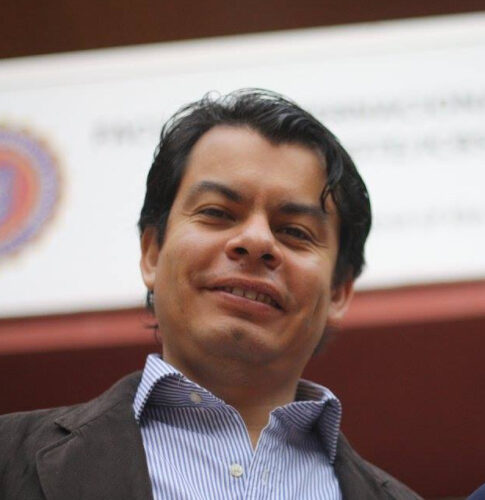U.S. biotech companies, for instance, normally use the Investigational New Drug (IND) application as reference to write the EU IMPD, and a common mistake is overlooking and failing to meet the requirements of European guidelines, which can result in serious objections by EU regulators and the potential rejection of the clinical trial application.
The IMPD is not just tremendously important for clinical trial submissions, but also to support future marketing authorization applications. Then, an accurate and complete IMPD is vital through all the stages of the drug development program.
If you are a sponsor planning to submit a clinical trial in Europe, the 25 aspects explained in this article will help you avoid common IMPD mistakes, so that you can improve your manufacturing processes and related documentation in advance and have higher chances of regulatory approval.
Now, let’s review these 25 key aspects to strengthen the quality section of your IMPD.
1 – Read and double check the EU guideline on chemical and pharmaceutical quality requirements for drugs to be used in clinical trials
First of all, familiarize yourself (deeply) with the official “Guideline on the requirements for the chemical and pharmaceutical quality documentation concerning investigational medicinal products in clinical trials”, where you can find the actual sections, contents, and instructions to prepare the quality part of the IMPD.
The quality section of the European IMPD includes portions related to the drug substance (DS) and the drug product (DP); which are specified as 2.1.S and 2.1.P respectively.
The DS is the active ingredient that furnishes pharmacological activity in the treatment of a disease, but does not include intermediates used in the synthesis.
On the other hand, the DP is the finished dosage form which is prepared from the DS and is ready for administration to the patient (e.g. tablet or vial).
Please note this article just refers to some elements included in the above mentioned EU guideline, and it does NOT discuss ALL the contents or sections of the official guide. Therefore, this article should not be used as a replacement of the official guideline.
The reader is encouraged to read the original complete European guideline and keep it as an essential reference to be double checked when writing and reviewing the IMPD.
2 – Section S.2.1: Include the information of all parties involved in the manufacture and testing of the drug substance
- Specify the names, addresses, and responsibilities of all the companies in charge of drug substance manufacturing and testing (include all of them; regardless of whether they are non-EU or European organizations).
3 – Section S.2.2: Describe the drug substance manufacturing process including how impurities are introduced
- In the case of chemical substances, summarize the synthesis process (including initial materials, intermediates, solvents, catalysts and critical reagents).
- Explain how impurities are introduced in the process and the suitability of the control strategy.
- Indicate any relevant process controls.
4 – Section S.2.3: List the materials utilized in the manufacture of the drug substance
- Indicate the materials used (e.g. raw and starting materials, solvents, reagents, catalysts).
- Summarize the quality and control of any critical aspects.
5 – Section S.2.6: Indicate whether the manufacturing process of the drug substance is different from that used for previous batches
- Explain if the manufacturing process differs from that used for the batches deployed in non-clinical studies.
- Discuss any important changes in the manufacturing process.
6 – Section S.3.1: Describe the structure of the drug substance
- Specify the structure of chemically defined substances along with important data.
7 – Section S.3.2: State the impurities related to the drug substance
- Make references to Eur., USP, or JP pharmacopeia (as applicable) and discuss the suitability to control the quality of the active substance.
- If references to Eur, USP, or JP pharmacopoeia cannot be made, state the impurities from the manufacturing process or starting materials.
- Discuss the (potential) mutagenic impurities according to ICH M7.
- Justify the absence of routine control for solvents/catalysts.
8 – Section S.4.1: Specify the tests used for the batch of drug substance to be deployed in the clinical trial
- Indicate the specifications, the tests, and their acceptance criteria for the batch to be used in the clinical trial.
- Include tests for identity, impurities and assay.
- For impurities, set the upper limits.
- Support the limits using the impurity profiles of batches of active substance used in non-clinical and clinical studies.
- Specify the microbiological quality for drug substances used in aseptically manufactured products.
9 – Section S.4.2: Describe the analytical methods used for the drug substance
- Describe the analytical methods used for all tests.
- It is not necessary to provide a detailed description of the analytical procedures (“analytical procedure” refers to how the analysis is done, while “analytical method” refers to the principles).
10 – Section S.4.3: Demonstrate the suitability of the analytical methods for the drug substance
- For phase I clinical trials, confirm the suitability of the analytical methods.
- Report the acceptance limits and the parameters for performing validation of the analytical methods.
- For phase II and III clinical trials, demonstrate the suitability of the analytical methods. Provide a summary of the results. In case of major changes in analytical methods, present cross-validation data.
11 – Section S.4.4: Supply results for drug substance batches
- Provide results for batches to be used in the clinical trial.
- Provide results for batches used in the non-clinical studies.
- If applicable, provide results for representative batches used in previous clinical trials.
- List batch information such as batch number, size, manufacturing site and date, control methods, and test results.
12 – Section S.6: State the immediate packaging material used for the drug substance
- Specify the immediate packaging material used for the drug substance.
- Provide specifications if non-compendial materials are used.
13 – Section S.7: Present updated drug substance stability data
- Summarize in tables the stability data.
- Include the parameters known to be critical.
- Describe potential degradation pathways.
- Define the retest period.
14 – Section P.1: State the complete qualitative and quantitative composition of the drug product
- Include qualitative composition for proprietary components, flavours and excipient mixtures.
- Specify the dosage form.
- Describe the function of each excipient.
15 – Section P.2: Provide a description of the formulation development of the drug product
- Describe the formulation development.
- If applicable for the specific product, demonstrate the compatibility with solvents used for reconstitution, diluents and admixtures.
- Summarize the method of preparation if the product is to be reconstituted or diluted.
16 – Section P.3.1: Specify all the companies involved in the manufacture, packaging, and testing of the drug product
- Make a list of all the companies involved in drug product fabrication, packaging/assembly and testing, stating their specific roles.
- Include the parties in charge of import and batch release.
17 – Section P.3.3: Describe the drug product manufacturing process and controls
- Describe the manufacturing steps, including components and controls.
- Include diagrams to describe the process.
18 – Section P.3.4: Describe the controls of critical steps and intermediates
- This is not required for phase I and II clinical trials, except for non-standard manufacturing and manufacturing for sterile products.
- For sterilization by filtration state the maximum acceptable bioburden prior to filtration.
- State whether aseptic processing operations were validated using media fill runs.
19 – Section P.4.1: Provide specifications for the control of excipients (drug product)
- Make references to the Ph. Eur., the pharmacopoeia of an EU Member State, USP or JP.
- Provide an in-house monograph for excipients not covered by common standards.
20 – Section P5.1: Provide specifications for the control of the drug product
- Mention the release and shelf-life specifications.
- Include tests on identity, assay and degradation products.
- Specify upper limits degradation products.
- Include drug product specific tests and acceptance criteria.
- Specify the acceptable quality standard after preparation of products to be reconstituted/diluted.
21 – Sections P.5.2 / P.5.3: Describe the analytical procedures and their validation (drug product)
- Discuss the analytical methods for all tests.
- Justify the suitability of the analytical methods for phase I trials.
- Present in a table the acceptance limits and the parameters for the validation of the analytical methods.
22 – Section P.5.4: Provide data on the drug product batch analyses
- Provide batch results for representative drug product batches to be used in the clinical trial.
- Include the batch number and size, manufacturing site and date, control methods, and the test results.
23 – Section P.7: Specify information related to packaging and the container closure system
- Indicate the drug product immediate and outer packaging.
- Provide detailed specifications if the product is packed in a non-standard device, or if non-compendial materials are used.
24 – Section P.8: Ensure your drug product stability information is in place
- Define the shelf-life and storage conditions of the drug product.
- Include a table with the stability data of representative batches.
- Extrapolation may be used, provided that stability studies are done in parallel to the clinical studies.
- Present in-use stability data for drugs to be reconstituted, diluted or mixed, and products in multi-dose containers. In clinical trials, solutions for infusion may be in contact with different materials (e.g. chemotherapy bags, infusion sets) before they enter the body of the patient. Then, the stability of the drug after dilution and its compatibility with diluents and physical components must be tested and confirmed.
25 – Get support from European IMPD experts
Writing a solid IMPD is no easy task and you should really count on the support of experts with proven expertise in preparing IMPDs for regulatory submissions in Europe.
There is a lot at stake when submitting a clinical trial for regulatory approval, and you want to avoid failing in the manufacturing and documentation of your drug candidate.
Having your IMPD written and reviewed by EU CMC and regulatory experts is highly recommended.
Conclusion
The quality section of the IMPD —which focuses on the manufacturing of the drug substance and the drug product— is of utmost importance to have clinical trials approved in Europe.
Not being able to meet the requirements of European CMC guidelines may lead to the rejection of a clinical trial by regulatory authorities.
Sponsors must be careful in producing a solid IMPD. This can be done by diligently following EU instructions and counting on the advice of European consultants.
Finally, we recommend the talk “Quality aspects in investigational medicinal product developments” by Tone Agasoster, as it is very useful to build quality documentation early in the drug development process.
Please note this article has been written using several (not all) aspects of the official “Guideline on the requirements for the chemical and pharmaceutical quality documentation concerning investigational medicinal products in clinical trials”. The reader is encouraged to use the full original guide when preparing an IMPD since this article does not discuss all the texts/sections of the guide.
Please contact us at info@sofpromed.com if you need expert help for drug substance / drug product manufacturing in Europe, and/or IMPD writing and review.









